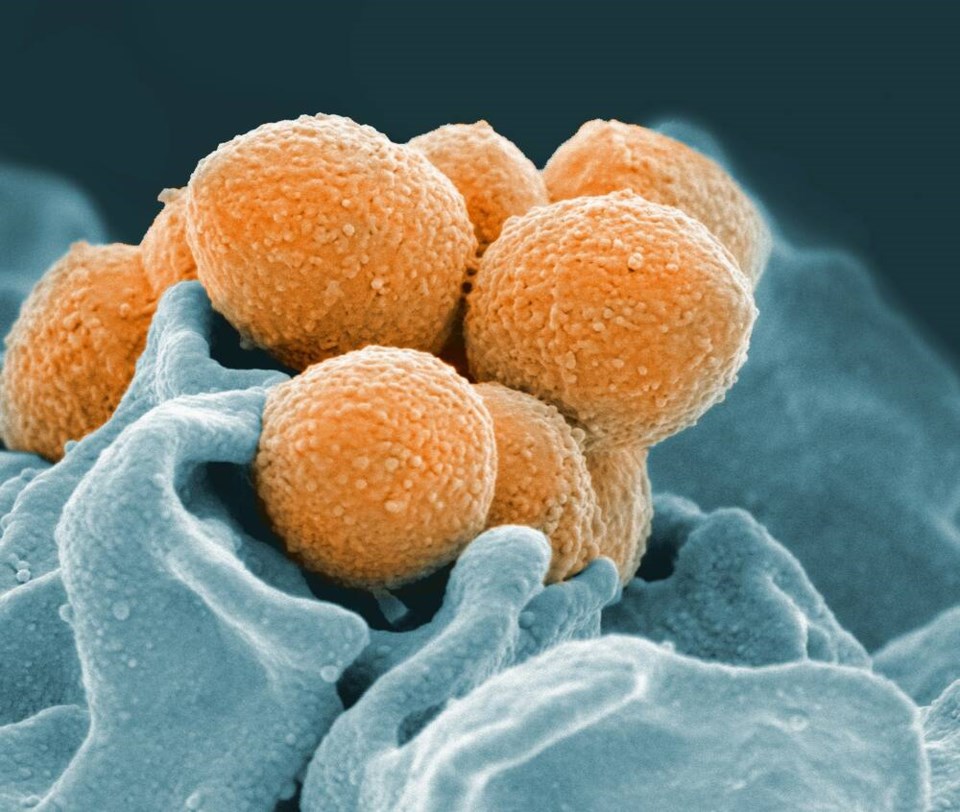Ryan Busto, a 41-year-old from Metro Vancouver, is in critical condition with “flesh-eating” disease in a San Diego hospital, and friends are raising money to help him out.
Busto was on a group cycling tour when he came down with flu-like symptoms and “severe” saddle sore, said his friend Tara Rosenberg, who is organizing the fundraiser.
Busto was in an induced coma but has transitioned from ECMO (life support) to ICD in an intensive care unit. He is a helicopter maintenance engineer at HeliJet, with his wife Marina they have seven- and four-year-old daughters.
“He’s like an amazing, amazing human, and I don’t just say that because he’s my brother,” his sister, Dominique Busto, told News 10 in San Diego. “We got a call saying his heart function had dropped down to 10 per cent and we were just throwing things in a carry-on suitcase, booking flights.”
By Saturday, her brother’s heart function had increased to almost 50 per cent.
“Waking up my parents to that news — it’s just not anything I would wish on any family,” she said. “Having to come down to San Diego and not knowing what was going to go on. Were we going to come down to here just to find a lifeless body or was he going to pull through? We didn’t know what we were going to find.
“If you have a small scrape, if you have a saddle sore and you’re feeling … the beginnings of a flu coming on, that is a major sign. Get yourself checked so it doesn’t get to the point that Ryan’s at.”
Last month, Christopher Won, an assistant fire chief with Vancouver Fire and Rescue, had his leg amputated while on holiday in Hong Kong after also contracting the potentially deadly disease.
To find out what the flesh-eating disease is that is afflicting Busto and what can be done about it, we talked to Dr. Brian Conway, president and medical director at the Vancouver Infectious Disease Centre. (Conway’s comments have been edited for brevity and clarity.)
What is flesh-eating disease?
I obviously first wish this unfortunate gentleman a full recovery.
The bacteria that are present in that part of your body are a little bit different (than if a limb, say, is infected). It could be a more complex and more significant infection.
That’s part of the body that we call the perineum, the genital area, and the flesh eating in that part of the body goes by the name Fournier’s Gangrene.
It’s caused by a variety of bacteria, spread pretty quickly, and requires surgical intervention.
How do you contract it?
Here’s what happens.
Someone would have an open sore, it could be a small fissure or an infected hemorrhoid, something relatively benign.
If a person has underlying diseases such as diabetes that weaken their ability to heal from bacteria it can, in a small, small number of cases, spread rapidly and involve the tissues around the area, including all the way into all of those muscles that are in that area.
There’s a lot of muscle, think of your glutes.
Once it invades the muscles it becomes flesh eating.
(If the open wound is elsewhere, say an arm or leg, the infectious bacteria comes from outside the body, such as the bacteria that causes strep throat or E. coli.)
What are the symptoms?
We can start with pain, just local pain. Pain and swelling.
Then you get a high fever and if (the bacteria) gets into the tissues as I’ve described, you will get very sick very fast.
You’ll feel weak, you’ll feel dizzy, you’ll feel achy all over and in the end you’ll have severe and increasing pain in the area.
How is it treated?
It requires intravenous antibiotics for a length of time, it can involve the need for repeated surgeries to make sure the dead tissue is removed so the infection doesn’t spread.
It can leave scarring and can lead to prolonged hospitalization.
What are survival rates like?
On average, in a certain amount of cases, it can be fatal about 10 per cent of the time. And it’s predominantly a male disease: For every 10 guys (who contract it) there’s one woman.
I want to underscore, (contracting flesh-eating disease) is very rare, very unusual.
Is there anything you can do to prevent it?
Nope.
If you’re getting sick and the sickness is progressing really quickly, then that is an issue that requires urgent medical attention. And that’s the same for the flesh-eating disease causing strep in your limbs.
It’s a good habit for all of us: If you wake in the morning and you’re perfectly well, let’s say, and (later that day) you have an illness that is making you very unwell very quickly you should consult (a doctor) because infections in general can spread rapidly and have very, very bad outcomes.
Don’t wait, don’t call 811, go to the emergency room.



